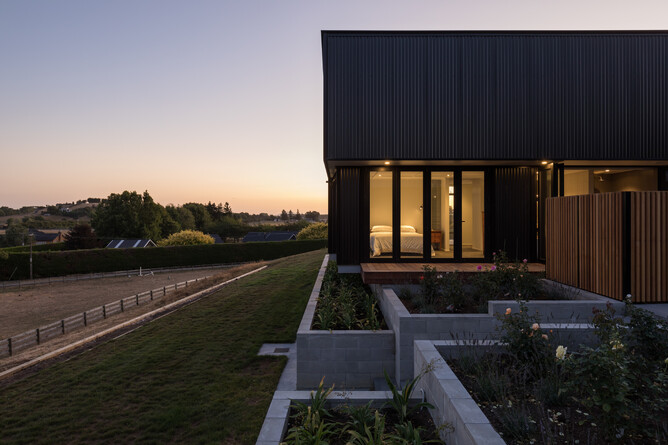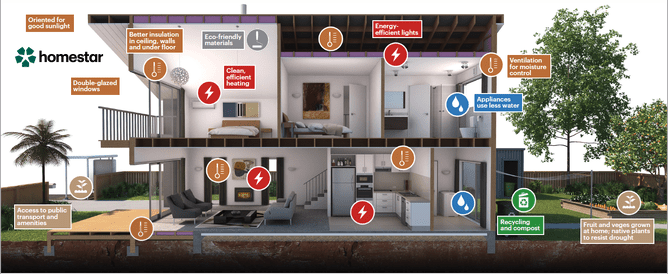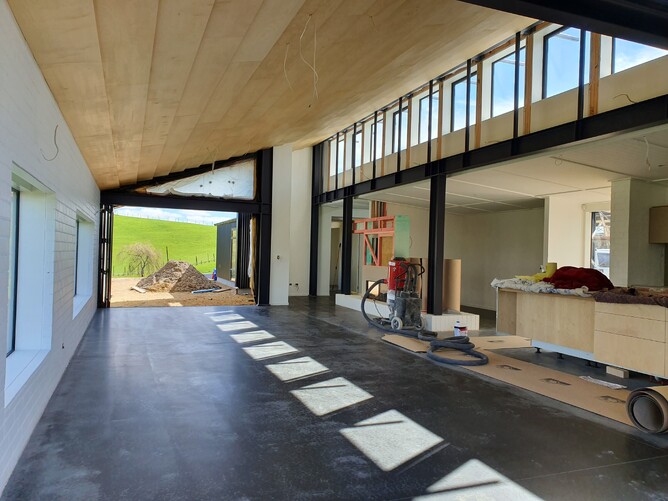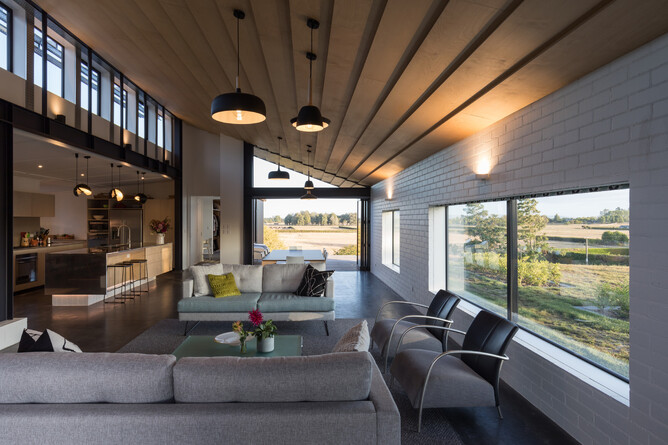Words by Sonia Fursdon and Mark Mawdsley. Photos by Geoff Lentz and Murray Shaw.
There’s a bit of a cliche about architects that they can be incredibly creative and design beautiful, elaborate buildings, but they’ll be woefully impractical and function poorly (the buildings that is, not the architects).
Thankfully this cliche doesn’t apply to the work of PAUA Architects. The practice’s design principles mean they have always designed homes beyond the minimum building code. This helps ensure that the families who live in in them are more than just wowed by the beautiful design, but most importantly that the home is built to last, comfortable and warm, dry, well ventilated, healthy, and efficient to run.
So they claim.
So the feedback from clients indicates.
And now, so Homestar certification from the New Zealand Green Building Council proves.
“Clients typically come to us intending to live in their home for ten or fifteen years or more. They’re not particularly focused on re-sale value, so while they highly value the qualities that Homestar assesses as being important for the house they’re living in the clients would rather spend the cost of a Homestar rating directly on improving the performance of their home”.
So, to get objective confirmation that they design naturally warm, healthy, efficient homes PAUA Architects chose to have one of their most recent house designs certified themselves. The decision to get the assessment wasn’t made until after architect Geoff Lentz had completed the design for this new home in Pencarrow, so he had not been specifically designing to achieve any particular star rating or deliberately to meet Home Star criteria.
What does a Homestar rating actually mean?
The seven categories of the Home Star assessment provide an objective, independent rating for new homes on:
- density & resource efficiency
- energy/health and comfort
- water
- waste management
- materials
- site
- home management
There is also an optional ‘innovation category’ for custom solutions that don’t fit within the standard assessment guidelines.
This not only gives homeowners confidence that their house will be healthy and comfortable for their family to live in, but provides a useful comparison if you’re looking to buy a new home, and a good rating could increase the market value of your home when you’re selling.
Design Details of the 6 Star Pencarrow home:
- an east-west truss design with high level clerestory windows allows daylight and north sun deep into living spaces, despite southerly aspect designed to capture the view
- substantial areas of honed concrete floor for sun-heated thermal mass
- energy efficient (LED) lighting
- minimised thermal bridging on walls, floors, ceiling, and window frames
- highly insulated concerte raft floor system, with insulated slab edges
- heat pump hot water system with twin chamber hot water cylinders supplying potable hot water and in-slab floor heating, programmable to use off-peak power.
- energy efficient appliances, including induction cooking hobs
- floor, wall and roof insulation well above code requirements
- Argon-filled double glazed windows with thermally broken aluminium frames
- dedicated mechanical ventilation in bathrooms and kitchen to minimise internal moisture
- high level opening windows for natural stack-effect ventilation
- underfloor heating, using shared heat pump hot water system
- low flow taps, showers and toilets
- 50kl rainwater collection tanks fed by rooftop collection (supplemented by tricklefeed backup)
- use of sustainable materials
- on-site stormwater management and onsite waste disposal using Natural Flow twin tank wormerator bio treatment system
How Could It Have Rated Higher?
The Homestar assessment being retrospective, it begs the question, could the rating have been improved, without sacrificing the design quality?
Architect Mark Mawdsley who prepared the exhaustive Homestar report for its formal certification says the house could have achieved a higher Homestar rating without significant design changes. Additional points could have been claimed if aspects of the building envelope and mechanical/electrical services were to be upgraded. As with any construction project there is a balance to be struck between overall cost, design outcomes, and the client’s brief.
“The house design itself per se was easily capable of at least a seven star rating.”
At 289m² with an integrated double garage, the floor area to occupancy ratio also counted heavily against the project in terms of achieving a higher star rating, a three bedroom home of 100–144m² would achieve points in this category. The overall size of the dwelling, with respect to the number of bedrooms, has an impact on the efficiency and environmental impact criteria of the Homestar tool.
Being situated on a 5295m² rural lifestyle block also meant it missed out on points for proximity to amenities, although some of this can be off-set to a degree in Homestar terms by providing onsite amenities including strategies including fruit trees and vegetable gardens, rainwater collection, and stormwater detention.
In every category of the Homestar tool there are many options that can help achieve better performance, some will be more effective or better suited for one house than another, which is one of the reasons PAUA Architects designs each home individually for the site and their client’s lifestyle.
Firmly dispelling the cliche we started with, practice principal Antanas Procuta proudly notes that, “this 6 Star rating demonstrates that you don’t have to sacrifice style and beauty for the sake of ticking the boxes on rating criteria. This beautiful, architecturally designed, crafted home easily matches the Homestar standards of comfort, health, efficiency and affordability to run of the mill basic box-style group Housing.”




